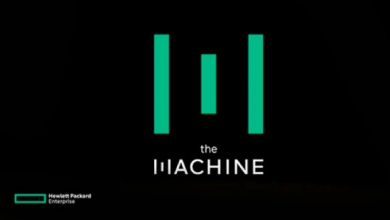HPE Reports Better Than Expected Earnings and Snaps Up Cloud Technology Partners (CTP)
When you add up the partners, technologies, people and businesses that HPE has shed, you have to wonder what remains. A hybrid-cloud future? Spot on. But as Whitman herself says in her company’s earnings release, “There’s more work to do…”
September 6, 2017

HPE (NYSE: HPE) on Tuesday surprised Wall Street with better-than-expected financial results for the fiscal 2017 third quarter ended July 31, and the rest of the industry with an announcement that it plans to acquire Cloud Technology Partners (CTP).
Herein I examine the fiscal results first, and the acquisition second.
For the quarter, net sales at HPE rose 3 percent to $8.2 billion. Earnings, meantime, fell 90 percent to a $200 million from $2.5 billion reported one year earlier.
For the record, the company’s “Enterprise Group,” which is responsible for networking, servers and software, saw sales grow 3 percent year-over-year. Networking sales were the star, growing 16 percent over last year, albeit from a modest-sized base. Storage sales, too, showed strength, growing 11 percent over last year. As expected, server sales struggled, growing a modest 1 percent year-over-year, which is less than the economy as a whole.
Separately, Software Services shrunk a modest 3 percent year-over-year to $718 million, while revenue from Financial Services rose 1 percent to $897 million.
What to make of the numbers? It’s difficult given how different HPE is today when compared to a year ago. Just last week, for example, HPE spun off a great deal of its software business (think the ill-fated acquisition of Autonomy) to Micro Focus. In April, HPE also spun out its enterprise services business unit to Computer Sciences Corporation (CSC), which then combined the business with its own operations to create DXC Technology (NYSE: DXC).
What’s that leave HPE? A lot, but not nearly what the company once was. In a prepared statement, HPE CEO Meg Whitman said, “The results of the third quarter are an encouraging sign of the progress we are making… With better execution we drove overall revenue growth, exceeded our EPS targets and improved our operating margins sequentially, all while completing the spin-merge of our Software business…”
All true. But the sentiments could also be interpreted as “we cut costs, shed businesses we no longer want and sold the hell out of what we focused on.” Clearly the message is that HPE is slimmer, more focused and better poised for growth. Great. But for what?
HPE signaled its intensions with the other bit of news that dropped on Tuesday, the acquisition of CTP. HPE believes the future is in hybrid clouds, which means determining whether applications, data and processes should be placed in an on-premises data center, a private cloud, a public cloud or some combination thereof offered as a SaaS application. To this end, CTP helps customers do three things:
Move to the cloud
Innovate on the cloud
Operate in the cloud
Good stuff, right?
No doubt. But what does this mean for HPE, which, according to its own disclosures, has to account for “separation costs, restructuring charges, amortization of intangible assets, acquisition and other related charges, transformation costs, valuation allowances and divestiture taxes, tax indemnification adjustments, defined benefit plan settlement charges and remeasurement benefit and an adjustment to earnings from equity interests.”
That’s in addition to the loss of goodwill, partner loyalty, brand equity, organizational momentum, business consistency and talent. This month, for example, Sue Barsamian officially transitions from HPE to Micro Focus. She served 16 years at HP, mostly recently as Senior Vice President and GM of Security. Barsamian was a supporter of channel partners and HPE’s market transitions. She could persuade the doubtful and recommit the indifferent. And so could countless other HPE executives come and gone.
When you add up the partners, technologies, people and businesses that HPE has shed, you have to wonder what remains. A hybrid-cloud future? Spot on. But as Whitman herself says in her company’s earnings release, “There’s more work to do…”
She adds that HPE is “on the right track,” which is reassuring.
But when does HPE pull into the station and show the world not just what is the next stop along the line, but the ultimate destination?
About the Author(s)
You May Also Like


